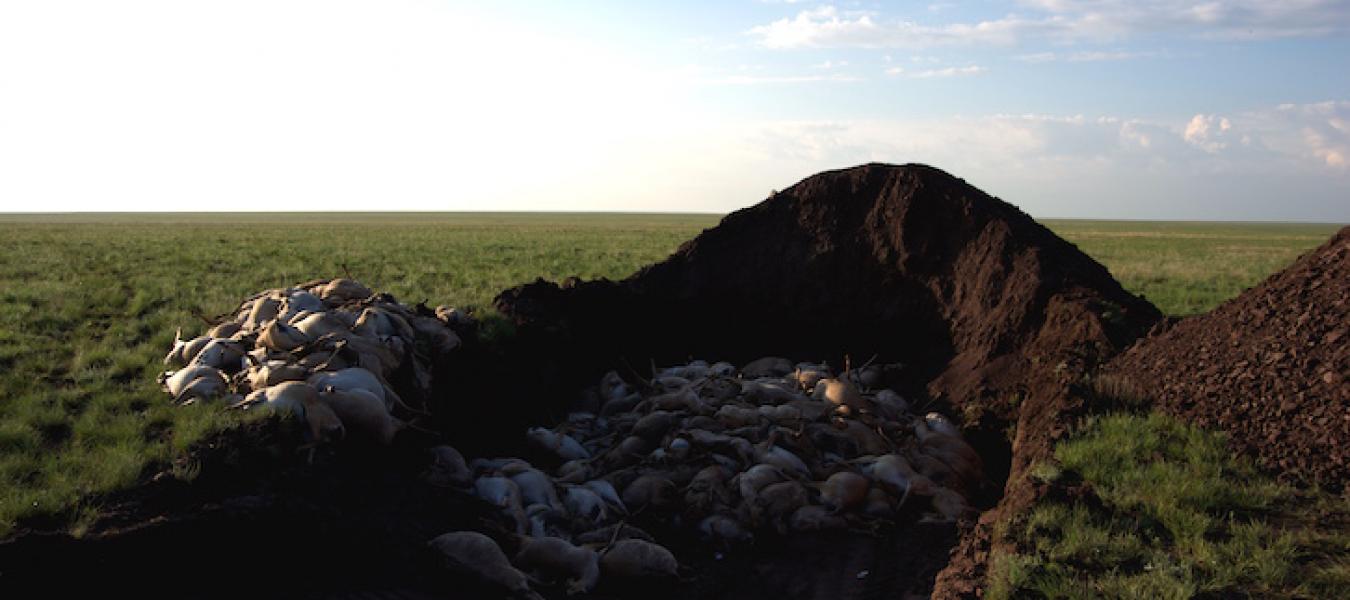Past and Future Mass Mortalities of the Saiga Antelope: Remote Analyses of Recent Human-Mediated Die-Offs

The current but untested hypothesis is that a combination of unusual weather, topography and pasture improvement resulted in fast-growing, moist and atypically composed forage, which caused a form of metabolite toxicosis.
An analysis of assumptions underlying this hypothesis using meteorological data and satellite imagery revealed that neither temporal variation in weather nor highly-productive, moist forage are likely to have been factors in the die-offs; although significantly lower vegetation or soil moisture in die-off zones than in the surrounding landscape indicates events were location-dependent, and therefore precipitated by changes in calving site selection driven by human environmental perturbations.
Unusual topography and pasture improvement in these locations probably promoted legume-rich pastures which triggered a condition more closely related to bloat, although variables may be acting at scales finer than assessed, signifying a need for local assessment of die-off pastures and demarcation of similar areas. High natural mortality during saiga calving with various aetiologies indicates an urgent need to limit disturbance at this vulnerable time and increase population sizes to prevent local extirpation.
